The PDF version of this article can be found here.
Pillars of Strength: NTUC Foodfare Co-operative v SIA Engineering
Daniel Ang Wei En*
I. INTRODUCTION
The Singapore Court of Appeal’s recent judgment in NTUC Foodfare Co-operative v SIA Engineering1 [NTUC] shed light on the present Singapore position on the imposition of a duty of care in cases of negligence resulting in economic loss.
In NTUC, a driver had collided an airtug into a pillar supporting the floor which the claimant’s kiosk was situated on.2 It was undisputed that the airtug driver failed to keep a proper lookout, and that the kiosk itself was not materially damaged.3 Following the incident, the Building and Construction Authority closed the premises, and Changi Airport Group cut off the supply of electricity to the claimant’s unit.4 Correspondingly, the claimant claimed for: (i) damage to equipment resulting from disuse; (ii) loss of profits during closure; (iii) costs for rebuilding of the kiosk; and (iv) rental incurred during renovation of the kiosk.5
A key question that arose was whether the driver owed a duty of care to avert the pure economic loss suffered by the plaintiff. In this regard, the Court of Appeal’s judgment dealt with three important issues:
(a) The appropriate stage to consider issues of indeterminate liability;
(b) The test applicable to relational economic loss; and
(c) The assessment of physical proximity.
These will be considered below, in turn.
II. APPROPRIATE STAGE OF THE SPANDECK TEST TO CONSIDER INDETERMINATE LIABILITY
The Court of Appeal held that considerations of indeterminate liability are addressed by, and turn on, the findings on legal proximity within the first stage of the test set out in Spandeck Engineering v Defence Science & Technology Agency6 [Spandeck].7 The Court reasoned that since potential defendants must have had a sufficiently close and proximate relationship with the claimant, a finding of proximity necessarily limits the class of potential plaintiffs.8
The Court held that the proximity requirement addresses the concern of liability to an indeterminate class – here, it ensured that the driver was liable only for the pure economic loss suffered by the determinate class of business operators in the area affected by his airtug’s collision.9 Applying the proximity factor of knowledge, the Court of Appeal held that the driver knew that by driving a “powerful vehicle”,10 he could cause damage to structures in the area. Correspondingly, the kiosk operators who would suffer economic loss due to the damaged structures was limited to “a determinate class of persons”11 [emphasis in original] and confined to operators on the same floor as the driver.
Ostensibly, the concern of indeterminate liability is still a policy factor considered under the second stage of the Spandeck test. In considering the policy factors, the Court reiterated its finding (earlier in the proximity stage) that the proximity requirement limited the driver’s liability to a determinate class of claimants (business operators in the affected premises who suffered pure economic loss).12
III. THE APPLICABLE TEST FOR RELATIONAL ECONOMIC LOSS
The Court of Appeal held that the Spandeck test is the applicable test for imposing a duty of care in respect of relational economic loss. Although the issue of relational economic loss specifically had not been considered by the Singapore Courts before,13 the Court of Appeal arrived at this conclusion because of: (i) the doctrinal coherence accorded by the Spandeck test; and (ii) the lack of normative justifications to transpose foreign tests into the Spandeck test.
On the first reason, the Court of Appeal reaffirmed that the Spandeck test would be the “single test for a duty of care for all claims in negligence, regardless of the nature of the plaintiff’s loss”.14 On the contrary, distinguishing relational economic loss from other kinds of economic loss would be to “introduce an even finer distinction into the duty of care inquiry” than the previously rejected distinction between physical damage and economic loss.15
In respect of the second reason, after reviewing Australian and Canadian authorities, the Court of Appeal concluded that they did not show a compelling normative justification warranting a separate criteria, because: (i) such criteria has been strongly criticized;16 and (ii) its purpose of addressing indeterminate liability can be addressed by Spandeck’s proximity requirement.17 In fact, the Court of Appeal opined that the foreign authorities also contained elements of a “proximity-based analysis”.18
IV. THE ASSESSMENT OF PHYSICAL PROXIMITY
The Court of Appeal held that there was physical proximity between the Driver and the business operator. First, there was physical proximity in terms of the physical-spatial distance between the Driver’s operations and the affected premises.19 More importantly, the Driver’s operations were confined to a very restricted area which included the affected premises.20 The Court contrasted this with the lack of proximity between shopping mall tenants and a driver operating in a much wider public area who collided into a shopping mall.21 Ostensibly, such a driver would be indeterminately liable – possibly to every tenant in every shopping mall in which he passes.
V. CONCLUDING THOUGHTS
Despite insisting on coherence between the duties of care with respect to the various types of pure economic loss, the Court of Appeal’s application of the Spandeck test itself lacked theoretical neatness. By addressing the concern of indeterminate liability in tandem with legal proximity, the Court conflated the two by straddling two conceptually distinct stages.
While the inquiries of legal proximity and indeterminate liability may effectively lead to the same result of limiting the class of plaintiffs, the two are not analogous. Rather, the content of each inquiry is distinct. The former incrementally22 applies “substantive content … capable of being expressed in terms of legal principles” [emphasis added] to the instant factual matrix.23 However, the latter assesses public policy, possibly “involving value judgments which reflect differential weighing and balancing of competing moral claims and broad social welfare goals” [emphasis added].24
These approaches have been applied even in cases where, like NTUC, the same subject-matter was assessed at both stages of the Spandeck test. In Spandeck, the considerations of adhering to the parties’ contractual framework were assessed at both the proximity stage and the policy stage. Unlike NTUC however, in Spandeck, each stage had a different inquiry. At the proximity stage, the Court of Appeal in Spandeck considered it as part of the assumption of responsibility inquiry.25 In contrast, at the policy stage, the Court in Spandeck sought to avoid imposing “a parasitic duty unnecessary for the parties’ protection”.26
Instead, the Court of Appeal in NTUC conducted the same inquiry at both stages, risking the dangers of applying legal requirements at a Spandeck stage inappropriate for the inquiry. The Court of Appeal in Spandeck warned that “it would be better if the courts were to articulate [policy] concerns under the requirement of policy considerations, rather than subsume these concerns within the proximity requirement, which may then lead to an overall distortion of the legal test to determine the existence of a duty of care” [emphasis added].27 Although the Court of Appeal’s conflation in NTUC is readily justifiable on grounds of practicality, it might potentially result in confusing guidance for lower courts in the future.
Moreover, the effect of the Court of Appeal’s assessment of physical proximity in this case is rather concerning. The distinction drawn by the Court through its contrasting examples effectively reduces liability for defendants who operate in a large, undefined and changing area.28 This is counter-intuitive – from a risk-creation perspective, such defendants create larger risks, ostensibly supporting the imposition of a duty of care.
Additionally, at the proximity stage of the Spandeck test, the Court’s consideration of proximities (physical and causal) together with a proximity factor (knowledge) in NTUC follows the trend of the Court of Appeal flexibly applying the three proximities and proximity factors. This is consistent with the Court of Appeal’s expansion of recognised proximity factors in Anwar Patrick Adrian v Ng Chong & Hue LLC29, beyond assumption of responsibility and reliance, by interposing the knowledge factor within relational proximity.30
Moving forward, this decision clearly reinforces the Spandeck test as the defining test for the duty of care inquiry in negligence. Since its inception, the utility of the Spandeck test’s general application and its theoretical neatness have been pillars of strength supporting the test’s application. However, it remains to be seen whether the shifting of the Spandeck stages will, much like in this case, collapse these very pillars of strength that the Spandeck test was founded upon.
* LL.B. (Hons.) Candidate, National University of Singapore. I record a debt of gratitude to Wong Wen Jian (Judicial Associate, State Courts of Singapore) whose invaluable guidance has greatly benefited an earlier draft of this case note and my education in the law of torts. Any errors and infelicities are, necessarily, my own.
[1] [2018] SGCA 41.
[2] Ibid at [11].
[3] Ibid at [11]-[12].
[4] Ibid at [13]-[14].
[5] Ibid at 22.
[6] [2007] SGCA 37; [2007] 4 SLR(R) 100.
[7] Supra note 1, at [42]-[43].
[8] Ibid at [43].
[9] Ibid at [52].
[10] Ibid at [50].
[11] Ibid.
[12] Ibid at [54].
[13] Ibid at [59].
[14] Ibid at [60].
[15] Ibid.
[16] Ibid at [61].
[17] Ibid at [78].
[18] Ibid at [65].
[19] Ibid at [47].
[20] Ibid.
[21] Ibid.
[22] Supra note 6 at [82].
[23] Ibid at [80].
[24] Ibid at [85].
[25] Ibid at [108].
[26] Ibid at [101] and [114].
[27] Ibid at [85].
[28] See supra note 21, for more on the issue.
[29] [2014] SGCA 34; [2014] 3 SLR 761.
[30] Ibid at [148].














